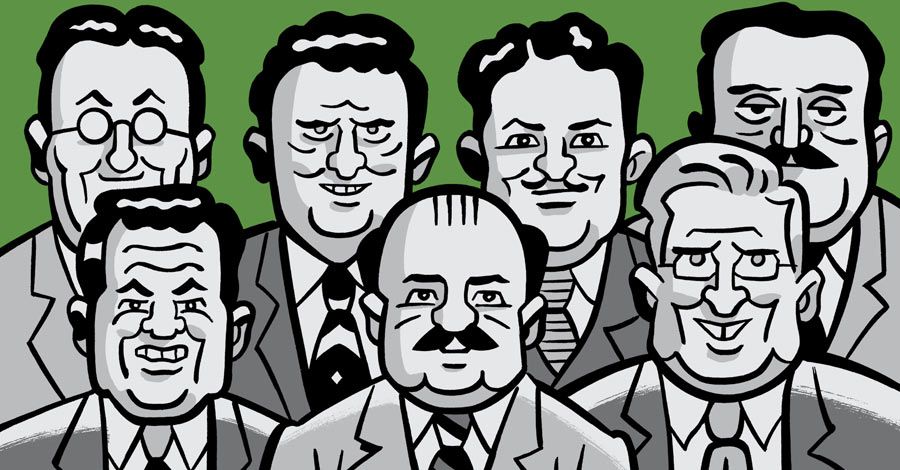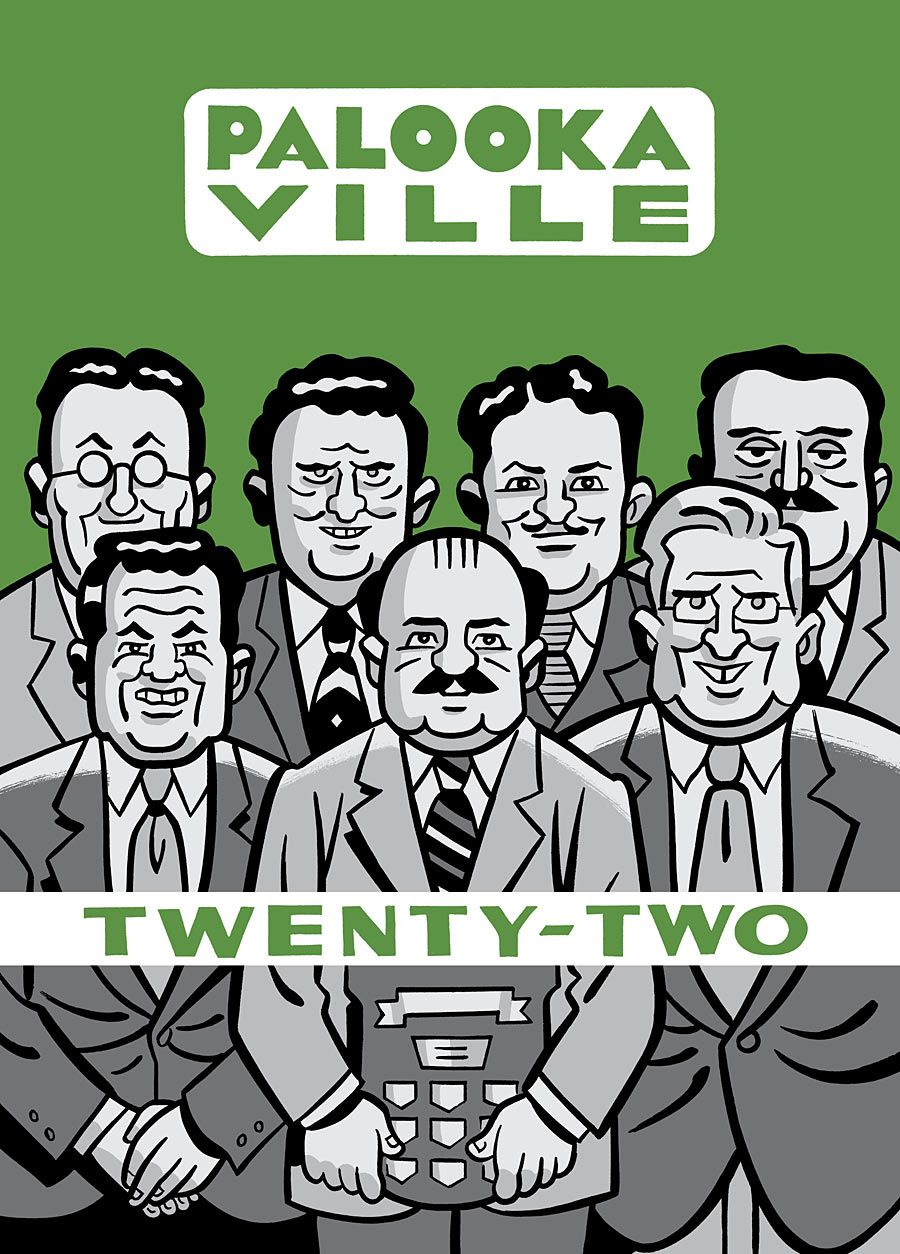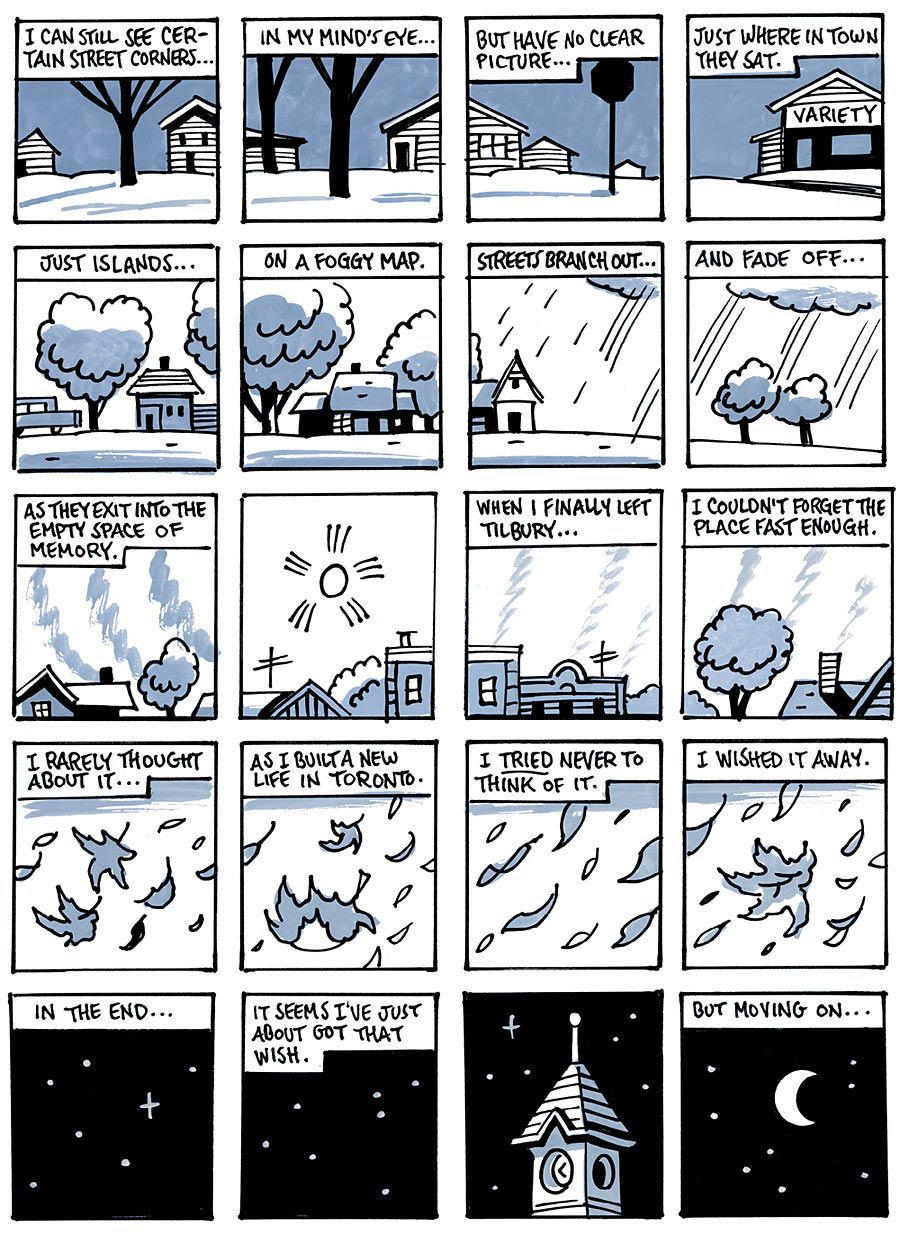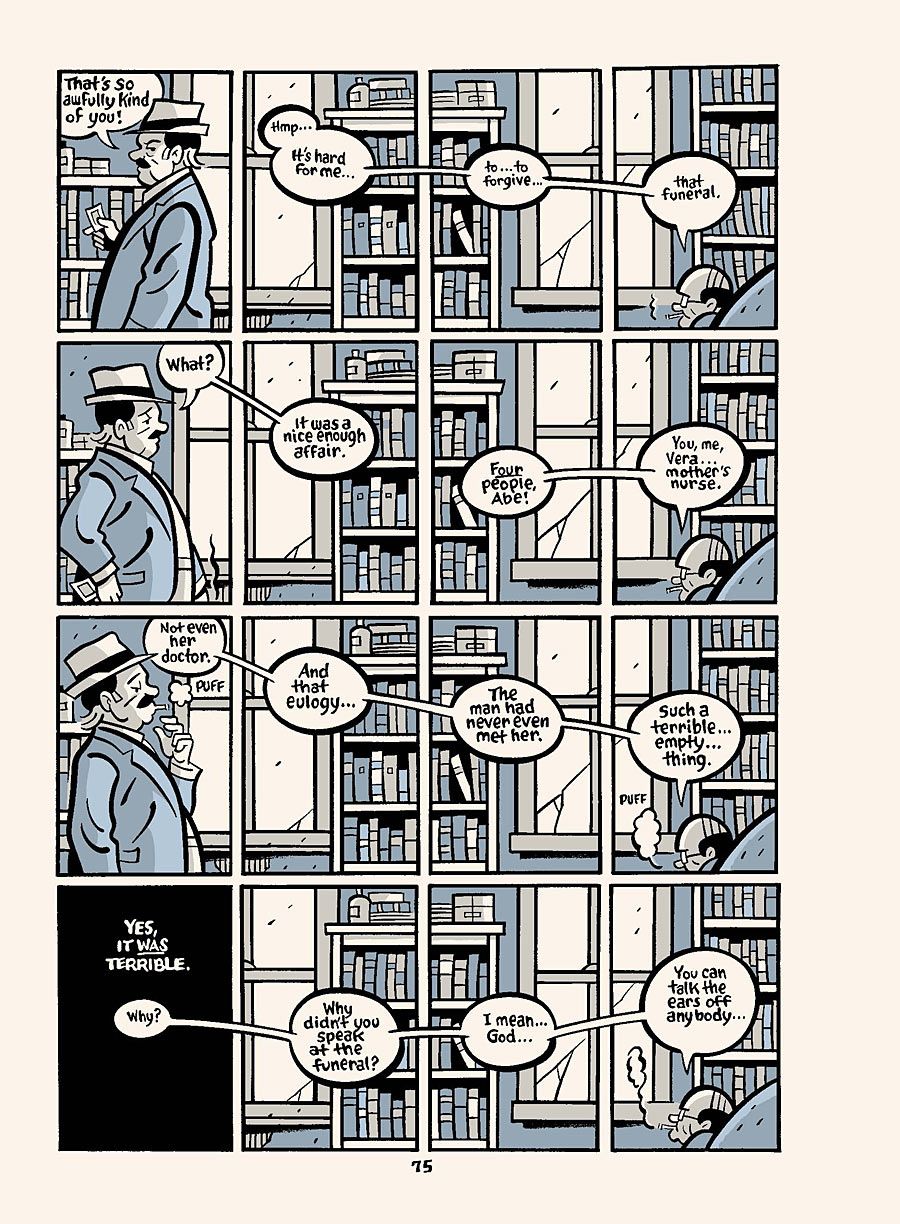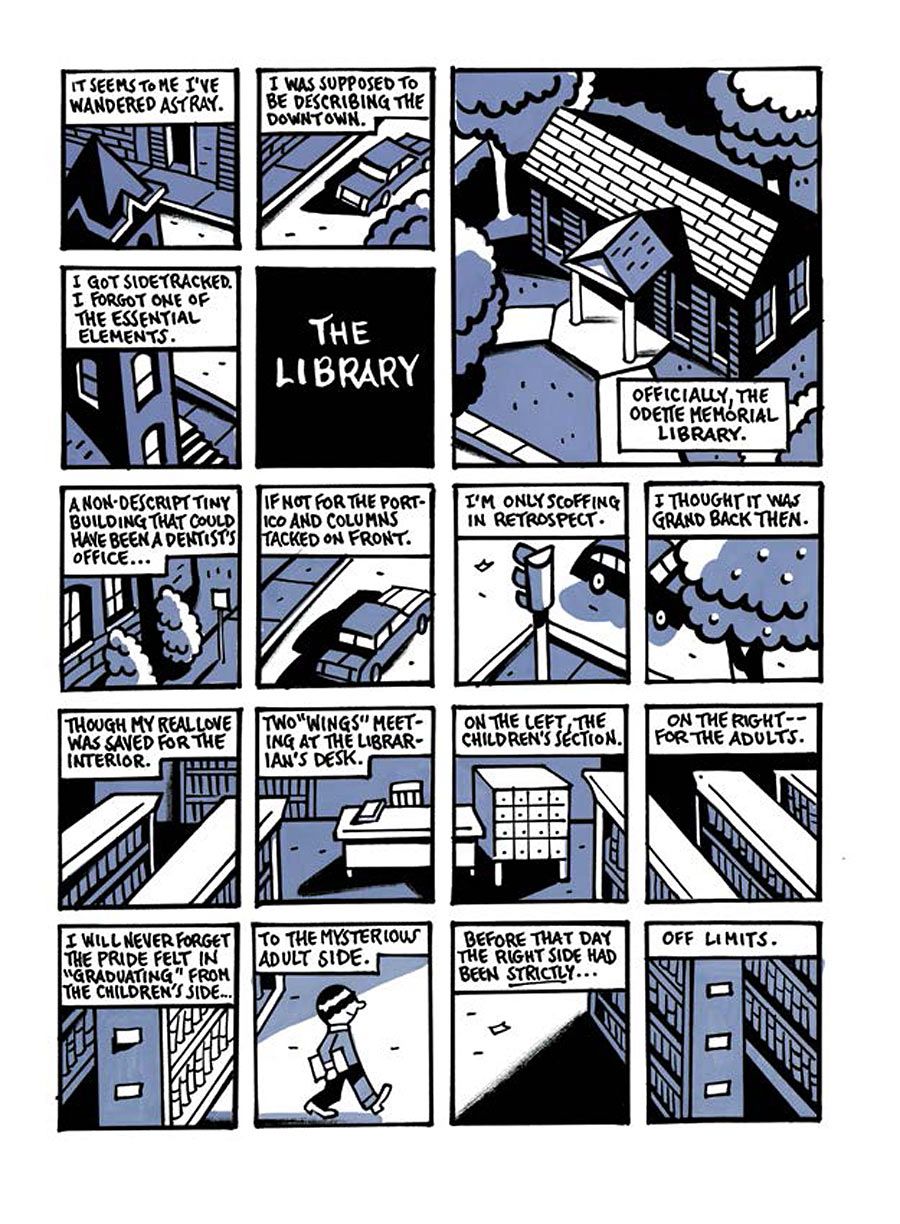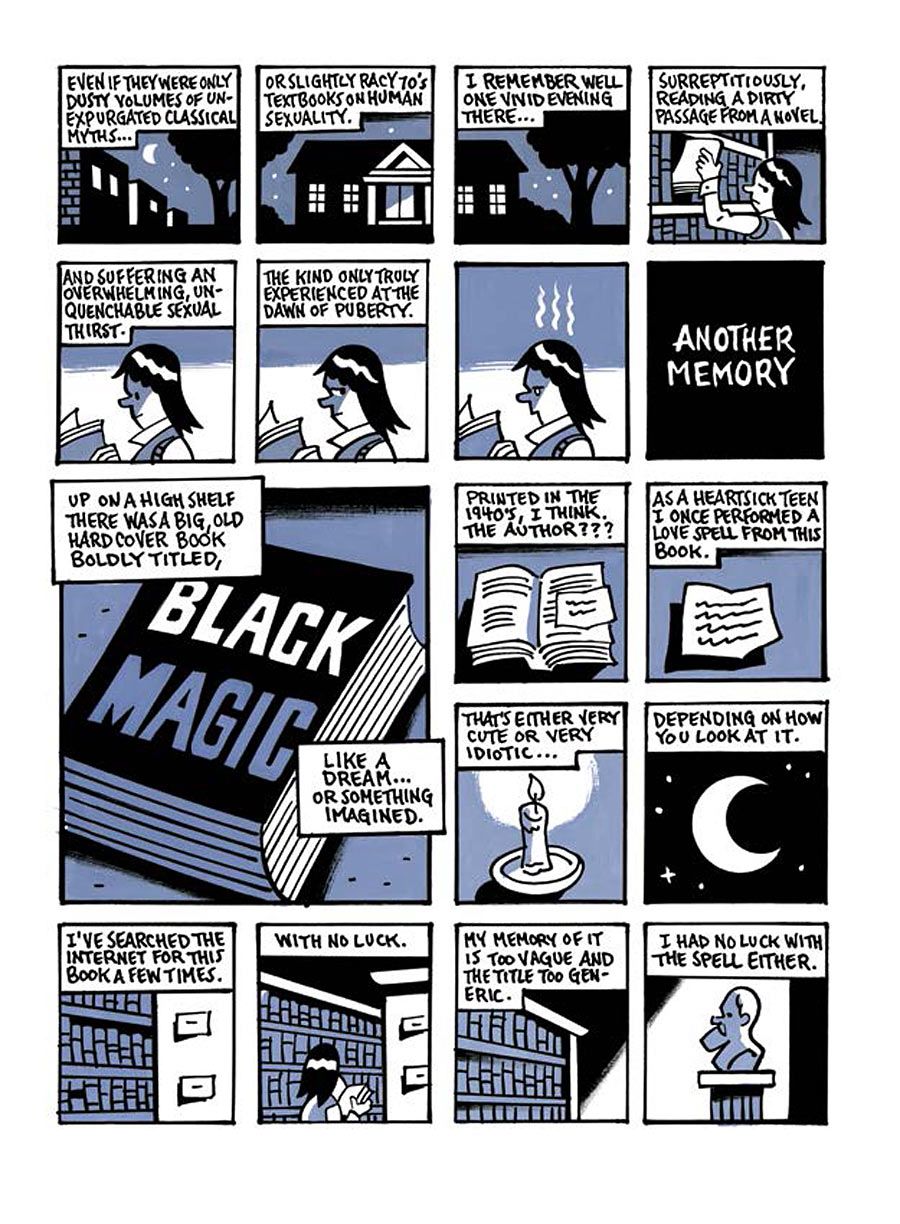The cartoonist known as Seth emerged as one of the major voices in comics during the 1990s based on the strength of "Palookaville" series. Since then he's been crafting a series of graphic novels ranging from the whimsy of "Wimbledon Green" and "The Great Northern Brotherhood of Canadian Cartoonists" to the dark complexity of "George Sprott" and "It's a Good Life If You Don't Weaken."
Also a noted illustrator and designer, Seth continues to oversee "The Complete Peanuts" from Fantagraphics and is the illustrator of the Lemony Snicket series, "All the Wrong Questions." In recent years he has continued "Palookaville" as a series of regular hardcover volumes which collect a variety of short works. Among them are the long running serial "Clyde Fans," journal comics, works of memoir, and various other projects.
Seth on "Canadian Cartoonists" & Returning to "Palookaville"
With "Palookaville" #22 available now from Drawn & Quarterly, CBR News connected with Seth to discuss his latest volume, the latest developments in "Clyde Fans," why he opted to return to "Nothing Lasts" as well as his other projects.
CBR News: This is the third volume of "Palookaville" you've done in this way. What have you learned or what have you gotten out of releasing work in this manner?
Seth: I guess I've learned that the book needs to feel like a substantial read. It needs as many comics pages in it as possible. "Palookaville" #20 was still too slim on comics. I was thinking in pamphlet terms still. "Palookaville" #21 was better, but still not enough of "Clyde Fans" in that volume. A skimpy chapter segment. "Palookaville" #22 is almost there. It's pretty packed with comics. If there is one thing I think I have learned -- one thing that will make the books better is for them to feel a touch more self-contained. That's difficult with continued stories but I think once "Clyde" is finally done in "Palookaville" #23 then I can try to structure each volume of the series to feel like a little more of a self-contained read. Whole chapters of a longer work that will have beginnings, middles and ends. Or stories done-in-one-issue. Fingers crossed.
I ask in part because the old "Palookaville" -- and all comics of that time -- represented something different, and I'm curious how it manages to be something similar to that but also something new that keeps you interested?
Well, the old comic and the new hardbacks are pretty different animals. I suppose the book is actually a better fit for me. It allows a kind of freedom of content that better expresses my various endeavors and interests.
Also, I like designing a book better than I liked designing a comic book. All that said though, I was fond of the old pamphlet format and I do miss some elements of it. But not all that much, surprisingly. In some ways, maybe the new format is a bit strange. I mean, some might think I could just wait and put out a story like "Nothing Lasts" simply as a complete book instead of putting it out in bits and pieces first. It might seem like an illogical idea to serialize these works -- especially nowadays (the "era of the graphic novel"). However the truth is, without this format I probably wouldn't even publish a work like "Nothing Lasts." I might not even have done it. I work on a story like that in my sketchbook with only the vague idea that if anything comes of it I can use it in "Palookaville." I wouldn't start a "real" book that way. I'd be more methodical and plan it out -- draw it better too. In some manner that might kill such a self indulgent piece. "Palookaville" allows me to play around in a way that is fruitful. "Nothing Lasts" might very well be my best piece so far -- who knows. It feels very direct to me. Which is good. But I probably wouldn't have written it as a standalone work. It would have seemed too self indulgent in tone and structure for a "graphic novel." Same with my other sketchbook stories I have published. I didn't even know "Nothing Lasts" would be so long when I started drawing it. It just keeps getting longer and longer as I work on it. I need that mental buffer zone of the "anthology" to give me permission to do such spontaneous, indulgent comic stories.
I'm curious, where did the idea for "Clyde Fans" originally come from?
The easy answer is that there used to be a store in Toronto on King Street that was the exactly the "Clyde Fans" storefront I draw in the comic. It was already closed when I first encountered it (or mostly closed) and I often looked inside the dark window and saw the two photo portraits on the back wall of the owners. From there it was merely an imaginative jump to start making up their lives.
The more complicated answer is that I don't really know where the story comes from. It is a complex mish-mash of fragments that has somehow come together over the years to mean something much more clearly about myself and my parents than I imagined when I first planned it out. It has evolved somewhat over time but it is surprisingly like the original plan. I tried hard (then and now) to not consciously give too much thought or obvious meaning to what I was writing. I knew, somehow, that it would all make some strange sense in the end. That seems to be working out so far (from my perspective).
Has your thinking about the story or the characters in "Clyde Fans" changed over time? Particularly as you've been making the new chapters the centerpiece of each "Palookaville" volume?
As mentioned in the last answer, yes and no. No, not much has changed in the overall plan for the characters and the story since I began it sooooooo long ago. But, yes, small elements have slightly altered over the span of the work. I've come to understand connections in the story that I didn't see originally. New sequences have appeared. Some elements got bigger, some smaller. A couple of story points will need fixing up when I eventually collect the work. In a lot of ways it is remarkably as I planned it eons ago -- but in other ways it has subtly evolved into a more subtle work.
What can we look forward to in Part 5 of "Clyde Fans?" And how much more of the story is there?
Part five, fingers crossed, will be printed entirely in "Palookaville" #23. It is the shortest chapter of the book. I don't want to give anything away but let me just say it will either be entirely what my readers expect for an ending or just the opposite. I'm not really sure what people expect. To me, of course, it is the perfect ending -- simply because I have always known exactly how the story would "wrap up." Let's face it, "Clyde Fans" is so slow paced, so lacking in conflict, so "monotone," that I would be very surprised if anyone saw the ending as "anti-climactic." I cannot imagine what anyone might think could be coming that would be "climactic!"
What made you interested in returning to "Nothing Lasts" in this volume?
Simple answer, the story had more to tell. The section in "Palookaville" #21 was never intended to be the whole piece. I figured out somewhere in the first 40 pages or so that I would write the story up to the end of young adulthood. At this point I imagine there are still about two installments of "Nothing Lasts" to go. It will end up about twice as long as I expected from when I started it.
I ask in part because you've done little autobiographical work and in "Palookaville" we've seen these comics and your journal.Did something change in the work that made you want to publish it? Did your perspective on it change?
Essentially I feel like everything I do is autobiographical in some way, shape or form. I don't really even think much about these distinctions any longer. Every new strip just feels like another logical step from whatever I was working on before it. The work is all of such a piece that often the themes from one work to the next are so similar that the readers probably get weary of my voice. I can't really help that. As an artist I feel like I am simply exploring my own path. Everything that I do seems inevitable. Maybe that means I'm not pushing myself into new territory -- I don't know. I sometimes wonder if I should do a different kind of story to "shake things up." Do a story about a young girl or a ghost story or something or other. I suspect though that these cosmetic changes wouldn't much affect my themes. Those stories would probably end up feeling just like my usual stuff. Who knows, I may still try such an experiment.
The third feature of the book is a photo essay of the Crown Barbershop and a comic about being a barber. Which came first? And why barbering?
Why barbering? Because my wife is a barber. Pure and simple. I know a lot about barbering through osmosis alone. I designed the barber shop as a gift to her -- but also as a personal indulgence. A pure pleasure. I mean, I was trying to create a real space that would work as a real business and I was trying to please myself -- somewhere in between those two positions it ended up fitting in as an important part of my "body of work." I dearly wish others would ask me to design interiors for them -- or even a building or other out-of-the-ordinary commissions for me. I loved making that shop. It is a great pleasure to make something "physical" like that. Of course it was also nice to have a "client" who pretty much let me do whatever I wanted.
The strip came second.
I did want to ask about some of your other work. For example, you're illustrating the new Lemony Snicket series. What do you find interesting about projects like this?
I'm not always a good collaborator but it is part of your life as a cartoonist/designer/illustrator that you find yourself working with or for others. Sometimes it is good and the work turns out to be important to you and sometimes it is not so great and you wish you could retreat to your "ivory tower." Fortunately, for me, Daniel Handler [who writes under the pseudonym Lemony Snicket] is a good person to work with. I've learned a lot collaborating on that series and probably I will do my own children's book in a year or two. I imagine that Daniel and I will do another book together sometimes soon too.
I like to keep a finger or two in a few pies. On a purely pragmatic level is it good to keep the door open to future opportunities. Interesting things might happen. Things you might not try without a push from someone. Right now I am working with a theater company (NEW NEIGHBOURHOOD) making posters for them. This is a new venture for me and I'm quite enjoying it. I am doing a strip for the Walrus magazine (titled "Owen Moore"). I don't do that many short strips but I would certainly enjoy doing more of that sort of thing. It is pleasing to do a shorter piece (this one will be only ten pages in total -- but ten pretty full pages). In each of these cases I think I become a better artist after having done them. That's not to say I might not have been better served to just sit in my studio and crank out my personal comic pages -- and yet, that doesn't seem to be how my "career plan" has turned out. Taking on commissions or collaborating -- it's part pragmatic and part idealistic. Never simple. Or rarely.
"Palookaville" #22 is available now from Drawn & Quarterly.

